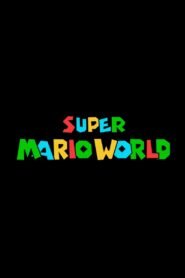

Watch And Download Spider-Man: Brand New Day – A Controversial Turning Point in Marvel History Latest Movie
Jul. 30, 2026n/An/A
Synopsis
Introduction
Spider-Man: Brand New Day is a pivotal storyline in the Spider-Man comic book mythos, marking a fresh direction for the character after decades of continuity. Launched in 2008 following the controversial One More Day arc, Brand New Day introduced a “reset” for Peter Parker, giving fans a single, streamlined Spider-Man story that stood independent of past complications like his marriage to Mary Jane Watson.
This article explores the key elements, creators, reception, and legacy of Brand New Day — while analyzing why it remains one of the most debated decisions in modern comic book history.
Background: What Led to Brand New Day?
Before Brand New Day, Spider-Man’s life was deeply entrenched in complex continuity. He was married to Mary Jane, Aunt May was dying from a gunshot wound, and his secret identity had been publicly revealed during Marvel’s Civil War event.
To undo these plot threads, Marvel published the One More Day storyline (2007), in which Peter and MJ make a deal with Mephisto (Marvel’s version of the devil) to erase their marriage from history in exchange for saving Aunt May’s life. As a result:
- The marriage never happened.
- Peter’s secret identity was hidden again.
- The status quo was effectively rebooted.
This controversial reset set the stage for Brand New Day.
Launching Brand New Day: A New Era for Spider-Man
Spider-Man: Brand New Day began in Amazing Spider-Man #546 in January 2008. It was part of Marvel’s effort to streamline Spider-Man’s publishing schedule. Instead of three separate titles (Amazing Spider-Man, Friendly Neighborhood Spider-Man, Sensational Spider-Man), the flagship Amazing Spider-Man was published three times a month.
The Creative Brain Trust
To manage the workload and bring fresh ideas, Marvel assembled a “Spider-Man Brain Trust,” featuring top-tier writers and artists:
- Dan Slott
- Marc Guggenheim
- Bob Gale
- Zeb Wells
Artists like Steve McNiven, Phil Jimenez, Chris Bachalo, and John Romita Jr. contributed to the vibrant and fast-paced look of the series.
Key Changes in Brand New Day
With Brand New Day, Spider-Man returned to his roots: a single, down-on-his-luck bachelor struggling with relationships, rent, and his role as a superhero. Key updates included:
1. No More Marriage
Peter and MJ were no longer a couple. Although they shared a mysterious and unspoken history, the romantic tension was rekindled without the baggage of marriage.
2. New Supporting Cast
Several new characters were introduced:
- Vin Gonzales – A tough cop and Peter’s new roommate.
- Carlie Cooper – A forensic scientist and potential love interest.
- Norah Winters – A sharp-witted reporter.
- Dexter Bennett – A new owner of the Daily Bugle, turning it into a tabloid.
3. New Villains
Brand New Day added memorable new rogues to Spider-Man’s gallery:
- Mister Negative – A philanthropist with a dark alter ego.
- Menace – A Goblin-like villain with a twist.
- Paper Doll – A horrifyingly thin villain obsessed with celebrities.
4. Spider-Man’s Powers and Gadgets
Peter developed new tech, including “web tracer” networks and even an “Anti-Venom” serum. His science background was emphasized more, helping him upgrade his superhero capabilities.
Fan and Critical Reception
The launch of Brand New Day was met with mixed reactions:
Praise:
- The comic was accessible to new readers, offering a fresh jumping-on point.
- High-quality art and writing, especially Dan Slott’s contributions, were praised.
- Fans appreciated the return to classic Spider-Man tropes: personal problems, humor, and street-level action.
Criticism:
- Many fans were still angry about the erasure of the Peter-MJ marriage, feeling it disrespected long-time readers.
- Some believed the “deal with the devil” (Mephisto) was a narratively weak solution to fix continuity issues.
- Others felt the reboot undermined character growth from the past two decades.
Despite the backlash, sales remained strong, and Brand New Day set the foundation for many future arcs.
Impact and Legacy
Though divisive, Brand New Day successfully revitalized Spider-Man in the long term. It served as a launchpad for key storylines that defined modern Spider-Man:
1. Dan Slott’s Long-Term Run
Slott eventually became the sole writer of Amazing Spider-Man, delivering major arcs such as:
- Big Time
- Spider-Island
- Superior Spider-Man
- The Clone Conspiracy
These stories would not have been possible without the groundwork laid in Brand New Day.
2. Rebuilding the Spider-Verse
The refreshed take on Peter allowed Marvel to expand the Spider-Verse, introducing alternate Spider-characters like:
- Spider-Gwen
- Miles Morales (from Ultimate Comics)
- Spider-Man 2099 (Miguel O’Hara’s return)
3. Ongoing Debate About Continuity
To this day, Brand New Day is frequently cited in discussions about editorial interference, fan loyalty, and the importance of character progression in comics.
SEO Keywords:
- Spider-Man Brand New Day
- Peter Parker reboot
- Marvel One More Day
- Spider-Man continuity reset
- Brand New Day controversy
- Dan Slott Spider-Man
- Mister Negative Marvel villain
- Spider-Man comic book history
- Peter Parker single life
- Mary Jane erased marriage
Conclusion
Spider-Man: Brand New Day remains one of the most talked-about turning points in Marvel Comics history. While it angered many long-time fans, it also opened the door for new storytelling possibilities and creative voices. Whether viewed as a betrayal or a bold reinvention, Brand New Day undeniably shaped the direction of Spider-Man for over a decade and influenced the character’s evolution across all media.
For new readers, it serves as a clean entry point. For long-time fans, it’s a controversial reminder of the ongoing battle between narrative growth and corporate mandates. Either way, Brand New Day proves that with great power comes great storytelling risk.
Original title Spider-Man: Brand New Day
IMDb Rating n/A n/A votes
Director
Director














